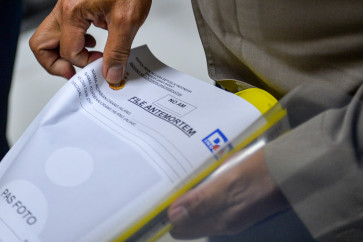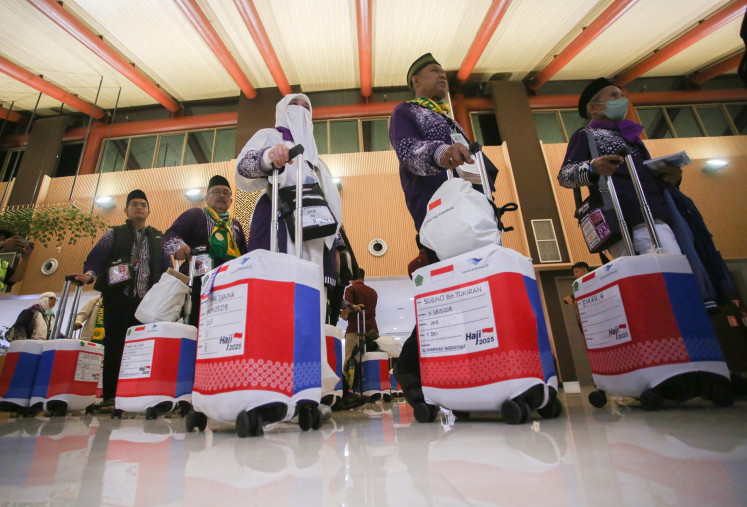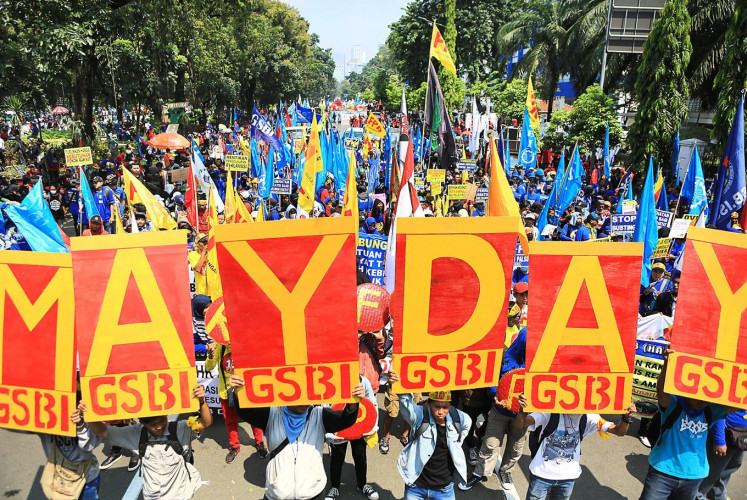Rainforest World Music Festival: Sacred sounds at Santubong
Rhythm in Bronze, a contemporary gamelan orchestra from Malaysia
Change text size
Gift Premium Articles
to Anyone

Rhythm in Bronze, a contemporary gamelan orchestra from Malaysia.
Between the South China Sea and Mount Santubong, a peninsula near the northwestern tip of Borneo, is a stretch of golden-sand beach where warm, calm waters murmur lullabies to an expanse of vine-clad trees. The people of Sarawak know this area as Damai.
Previously only reachable by boat via a network of rivers that were the arteries of an ancient town, now known as Kuching, this area began to open up with the building of an access road in the early 1980s.
Fourteen acres of forest was set aside for a living museum. An Iban longhouse, a Melanau tall house, a Penan hut and an Orang Ulu longhouse were erected around a man-made lake near a Chinese farmhouse and a Malay house, showcasing the heritage of the major racial groups in Sarawak.
Here, Sarawak's ethnic diversity becomes evident, not only in its robust architecture but also in its handicrafts: Iban Pua Kumbu sacred weaving, parang swords and Orang Ulu wood carvings, to name a few.
There is even a Baruk, a circular platform hut where Bidayuh warriors once-upon-a-time would congregate
and preserve human heads by smoking these trophies above the roof, hung in sacred woven holders and, on rare occasions, carve prized trophies of high-born heads.
A close encounter with these ancient cultures, however, had nothing to do with headhunting but was made possible with the three-day music festival there.
For the last 16 years, the Sarawak Cultural Village has been home to the Rainforest World Music Festival (RWMF).
Established as a festival to showcase the traditional music of the peoples of Borneo, this annual event has gained world recognition as a stage for the tribal music of Africa, Australia and Latin America, as well as the folk music of Europe, the Middle East, the Americas and Asia. 
These arbitrary lines are blurring fast as collaborations and cross-pollination give birth to a burgeoning genre of world music.
This year, the three-day festival evening program opened on June 28 with blessings chanted in five native tongues, each given a moment in the limelight. The magic was then augmented by a 71-year-old Kayan nose-flautist hailing from the Borneo interior. Through an impeccable technique of reverse circular breathing, Juk Wan Emang played, without pause, several minutes of uplifting and exalting music.
Soon it was time for dancing. The Sape boat lute of Orang Ulu, accompanied by drums and dancers, was swiftly followed by a mesmerizing contemporary performance by Rhythm in Bronze. The Malaysian gamelan orchestra performed pieces from around the Southeast Asian archipelago with infectious enthusiasm, blending in elements of guitar, scat and song with the traditional instruments.
Dancing was then brought to a frenetic pitch by Chet Nuneta of France, Alp Bora of Turkey/Austria and Beto Jamaica of Columbia, leaving legs shaking when a reprieve came in the form of a native chant thanking Mother Earth for her bounty.
Then more indigenous treats, this time from Australia: storytelling by didgeridoo, song and dance! Nunukul Yuggera, an Aboriginal troupe, channeled Australian wildlife, hunting and fishing, and even produced their own smoke and fire with two sticks and a handful of dry grass.
The evening's finale ' percussive singing by Kila of Ireland ' provided rhythms for dancing until well past midnight.
Thankfully, the festival schedule was otherwise light. There were no activities scheduled throughout the morning, giving revelers an opportunity to sleep in, laze on the beach or go for a forest walk. Workshops started at 2 p.m. at three venues in the village and finished by 5 p.m.
Three sessions of three simultaneous 45-minute workshops gave insight into techniques in song, dance and musical instruments. These also provided an opportunity to get up close and personal with the artists who performed in the evenings. Diehard fans could attempt to attend nine of the 27 workshops held over the three days.
The workshops were, by far, the most engaging part of the festival. One could be transported up the Baram River learning the music of the Orang Ulu or walk in the footsteps of the Bidayuh through their dance.
Besides providing immersion experiences, the RWMF did an amazing job of bringing together the diverse cultures into comparative studies. To grasp, for instance, what connects the flutes of many cultures, or bowed stringed instruments from around the world. Some are pure fun. At The Art of War on the Saturday afternoon, we could join the Africans or side with the Aborigines in a dance duel.
Between 5 p.m. and 7 p.m., there was a healthy period for rest and eating while admiring the sun set behind Turtle Islands on the western horizon. Those bothered by the tropical heat opted to wade into the sea to float or chat in circles.
As the evening settled in, so did the humidity, as a light drizzle fell lightly to remind us we were in a rainforest. Refreshingly cool. Then the medley of indigenous and international music and dance would start all over again until past midnight.
Flying home, it's hard not to feel grateful for the opportunity to have experienced a tiny portion of Sarawak's rich heritage. The vastness of its land and the diversity of its cultures promise many more memorable experiences to come.
' Photos courtesy of Sarawak Tourism Board









